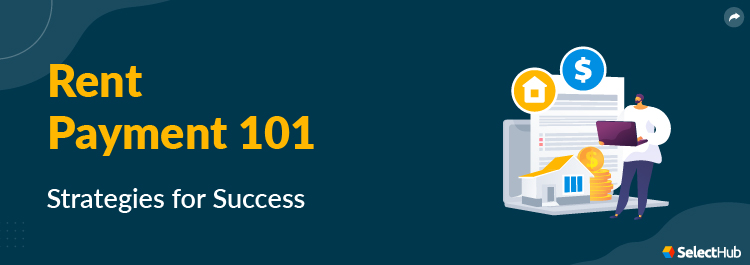Rental real estate is lucrative, but manually collecting rent payments while managing daily operations can overwhelm you. With rising rent structures across the U.S., it’s more important than ever to have a clear and organized system for tenants to pay rent.
In this guide, we’ll discuss various payment options and equip you with strategies that ensure your rental business runs smoothly without having your tenants lose sleep over how to make ends meet.
Compare Top Property Management Software Leaders

This Article Covers
- How To Pay Rent
- How Can Tenants Pay Rent Online?
- Benefits of Online Rent Collection
- Popular Rent Payment Software
- FAQs
- Wrap Up
How To Pay Rent
At the core of every rental business is a leasing agreement that specifies the nature of a landlord-tenant relationship and defines the monetary implications of using a property. A good agreement will clearly outline acceptable methods of rent payment preemptively.
Most of us have rented spaces at some point in our lives. And it isn’t pleasant to incur late payment penalties simply because you don’t know how to pay rent or when the rent grace period ends.
Deciding on terms and conditions before jumping into a lease is crucial. Here are leading payment options you can consider while leasing to avoid confusion and help your tenants clear their dues quickly and easily:
Cash
Paying rent in cash can be convenient. It’s a liquid form of money and doesn’t require tenants to undergo complicated payment procedures. However, there are potential risks and drawbacks.
The primary concern is the risk of loss or theft. On top of that, cash payments don’t inherently have a paper trail or electronic record. Landlords must add an extra step in their already packed workflows to manually account for each rent, late fee and utility payment.
Checks and Money Orders
Checks and money order payments are common and relatively secure methods to transfer funds. A check is a written document instructing a tenant’s bank to transfer the rent amount directly from their account to the landlord’s account.
A money order is a prepaid document. Unlike checks, it will never bounce back due to insufficient funds in the payer’s account.
The primary advantage of these options is that they provide a definite paper trail and transaction records that help solve disputes and spot discrepancies. But the drawback is that it’s a time-consuming process.
Tenants may need to wait in long queues to acquire these money instruments, and landlords must wait for clearance before funds are available. In addition, banks may have extra check cashing fees or money order commissions.
Card Payments
A debit or credit card is an easy way to pay rent without carrying large amounts of cash or waiting in long bank queues. It can also help boost a tenant’s credit score for each on-time payment.
But there may be additional processing fees depending on the landlord’s and tenant’s banks. It’s always a good idea to check if your owner or property manager charges an extra card processing fee before using this option.
Payroll Deduction Schemes
A few states, like New York and California, have special schemes for government employees that deduct the rent amount from their monthly payrolls. It allows tenants to set up automated payment workflows that ensure on-time payment and help avoid late fees.
Most of these programs automatically deduct half the rent and request your permission for the other half.
Rent Delegation to Third Parties
In the case of senior citizens, student housing or disabled residents, a property management business may send monthly rent statements or invoices to an authorized caregiver. The third-party caregiver can choose the preferred payment option to clear bills.
Online Payments
The most convenient option in the list, an online payment portal, allows you to pay rent on the go or from the comfort of your home with just a few clicks.
It can be as simple as creating an account, entering rent and lease details, and inviting your tenants to onboard the platform or download a mobile app. These solutions streamline your rent collection process with unique features like recurring billing, real-time notifications, automated credit reporting and late fee calculations based on user rules.
Property management is a hectic profession, and online rent payment solutions are great tools to simplify routine tasks using automations.
If you still aren’t convinced, a recent industry report found that online payment is the top technology desired by renters of all ages, followed by digital communications and online maintenance requests.
Want to know how to set up online payment for your tenants? Read on.